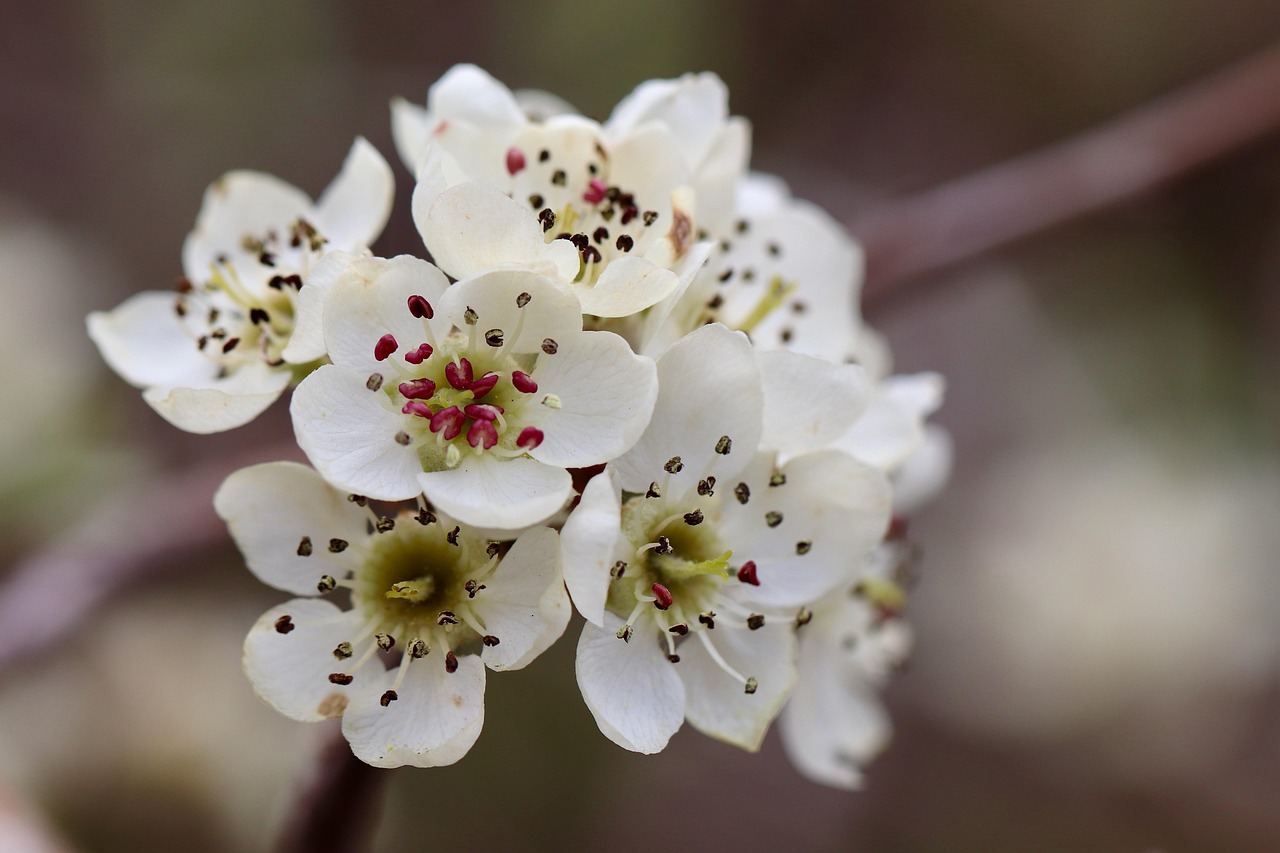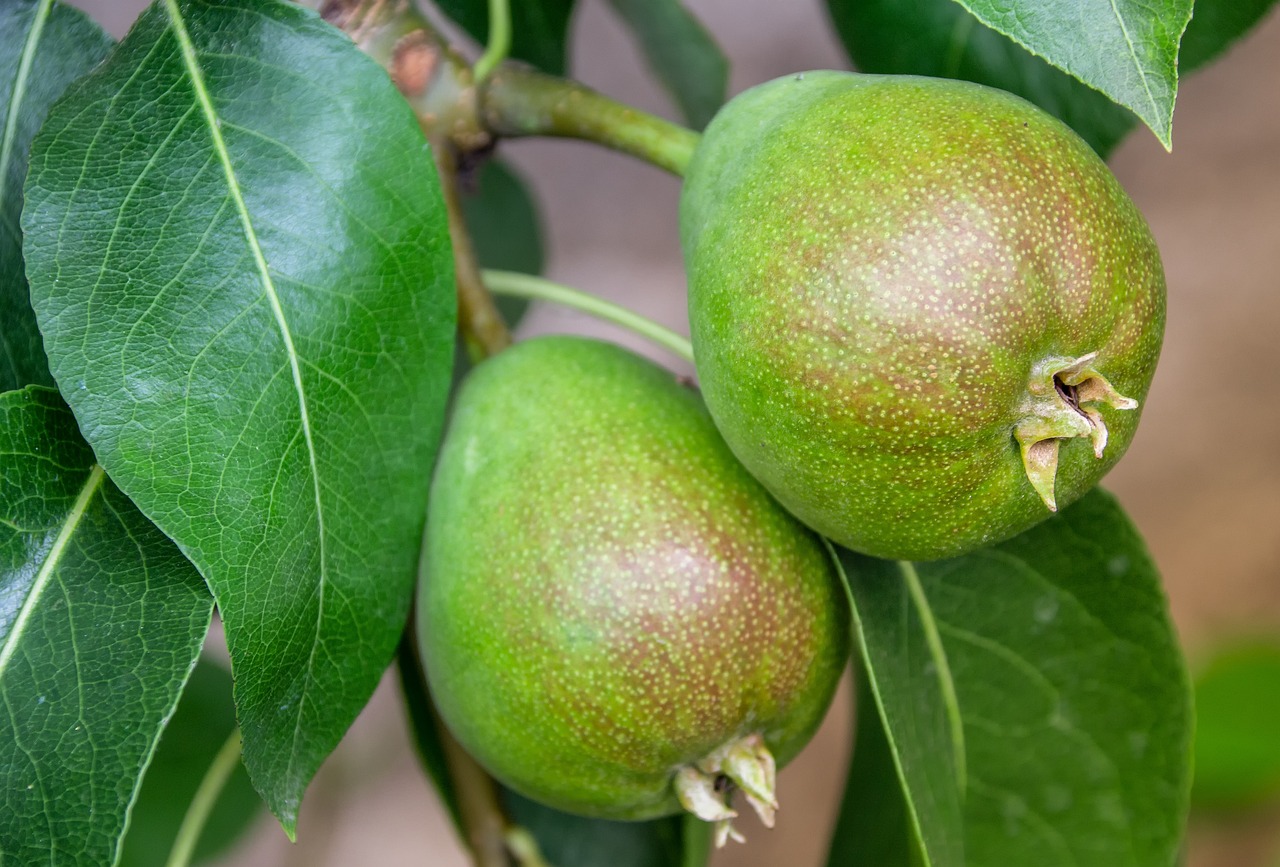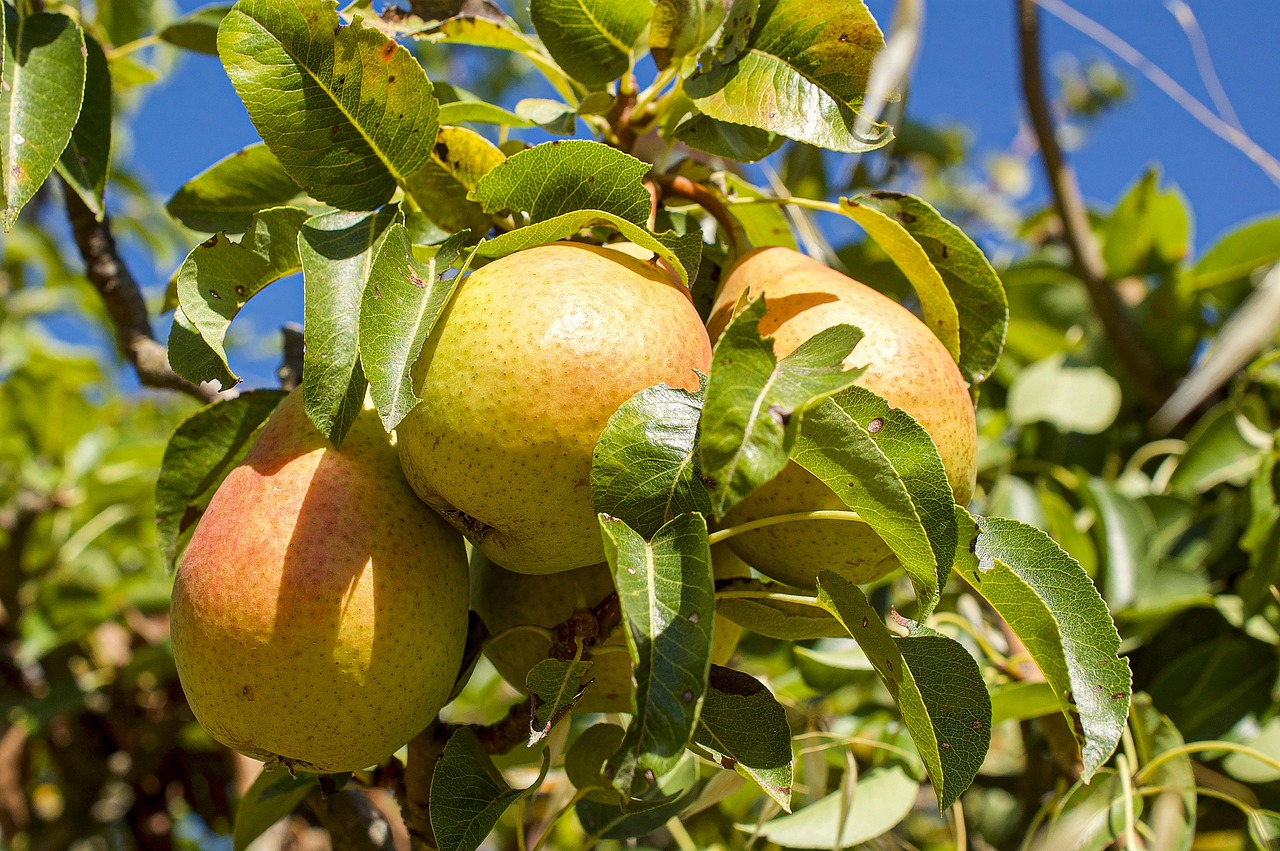Pear trees typically grow at a moderate rate of about 12 to 24 inches per year under optimal conditions in backyard gardens. Factors such as soil quality, sunlight, and care practices can influence this growth rate.
Pear trees are a popular choice for backyard gardens due to their delicious fruit and beautiful blossoms. Understanding the growth rate of pear trees is essential for gardeners who wish to cultivate them successfully. These trees not only provide shade and aesthetic appeal but also bear fruit that can be enjoyed in various culinary applications.

The growth rate of pear trees can vary significantly based on several factors, including the tree variety, soil conditions, climate, and care practices. Generally, younger trees tend to grow faster than older ones. With proper care, most pear trees can achieve a height of 15 to 25 feet when fully mature. This makes them suitable for a range of garden sizes.
Factors Influencing Growth Rate
Several key factors play a critical role in determining how quickly a pear tree will grow. Understanding these elements can help gardeners optimize their cultivation practices.
- Soil Quality: Well-draining, loamy soil rich in organic matter promotes healthy growth.
- Watering: Consistent watering, especially during dry spells, is vital for maintaining growth rates.
- Sunlight: Pear trees thrive in full sun, requiring at least six hours of direct sunlight daily.
- Fertilization: Using the right fertilizers at appropriate intervals boosts growth and fruit production.
- Pest Management: Protecting trees from pests and diseases is essential for ensuring healthy growth.
In addition to these factors, the chosen variety of pear tree can also impact growth rates. For instance, some varieties are bred for rapid growth and early fruiting. Others may take longer to mature but produce larger yields over time. A gardener’s choice should be influenced by their specific goals and garden conditions.

Types of Pear Trees
There are several varieties of pear trees available for planting in backyard gardens. Each type has unique characteristics that affect its growth rate and fruiting capacity. Below is a table highlighting some common types of pear trees along with their notable features.
| Variety | Growth Rate (inches/year) | Maturity Height (feet) | Fruiting Time |
|---|---|---|---|
| Bartlett | 24 | 15-20 | 3-4 years |
| Asian Pear | 18 | 10-15 | 4-5 years |
| Anjou | 12 | 15-20 | 4-5 years |
| Seckel | 12 | 10-15 | 3-4 years |
As shown in the table, different pear varieties exhibit varying growth rates and timeframes for fruiting. Selecting the right type for your garden is essential as it will determine not only how quickly you can expect fruit but also how much space the tree will require.
Additionally, local climate and environmental conditions can greatly influence how well a particular pear tree variety will thrive. Understanding these dynamics will help in choosing the best variety suited for your backyard garden.

By taking into account the growth rates and specific needs of different pear tree varieties, gardeners can make informed decisions that will lead to a fruitful and healthy garden experience. Proper planning and care can transform your backyard into a productive oasis filled with delicious pears.
Optimal Growing Conditions for Pear Trees
Creating the right environment for pear trees is essential for achieving optimal growth rates and fruit production. Several factors contribute to the overall health and development of these trees. Understanding these conditions can help gardeners maximize their yields.
Soil Requirements
Pear trees prefer well-draining soil that is rich in organic matter. The ideal pH level for pear trees is between 6.0 and 7.0. Here are some key soil characteristics to consider:
- Drainage: Good drainage prevents root rot, which can be detrimental to pear trees.
- Organic Matter: Adding compost or well-rotted manure improves soil structure and provides essential nutrients.
- Soil Type: Loamy soil is ideal, but sandy or clay soils can also support pear trees with proper amendments.
Watering Practices
Watering pear trees properly is crucial for their growth and fruiting. Here are some guidelines to follow:

- Frequency: Young trees require more frequent watering until their roots are established, while mature trees need less water.
- Deep Watering: Water deeply to encourage root growth, especially during dry spells.
- Avoid Overwatering: Check soil moisture levels to prevent waterlogging, which can harm the roots.
Sunlight Exposure
Pear trees thrive in full sunlight. Here are some recommendations regarding sunlight exposure:
- Sunlight Hours: Aim for at least six hours of direct sunlight each day.
- Location: Choose a planting spot that is not shaded by buildings or other trees.
- Seasonal Changes: Be aware of how seasonal changes affect sunlight exposure throughout the year.
Pear Tree Pruning Techniques
Pruning is an essential practice for maintaining the health and shape of pear trees. Proper pruning can enhance growth rates and improve fruit production. Here are some key points to consider when pruning pear trees:
- Timing: The best time to prune pear trees is late winter or early spring before new growth begins.
- Tools: Use sharp, clean tools to make precise cuts and reduce the risk of disease.
- Techniques: Focus on removing dead or diseased branches and thinning out crowded areas to improve air circulation.
Pest and Disease Management
Pear trees can be susceptible to various pests and diseases. Effective management practices can help safeguard your trees and ensure they reach their growth potential. Below are some common issues and management techniques:
| Pest/Disease | Description | Management Techniques |
|---|---|---|
| Pear Psylla | A sap-sucking insect that can weaken trees and cause leaf drop. | Use insecticidal soap or neem oil for control. |
| Fire Blight | A bacterial disease that leads to the wilting of blossoms and shoots. | Prune affected branches and apply appropriate fungicides. |
| Codling Moth | A pest that infests fruit, causing it to drop prematurely. | Use traps and natural predators for control. |
Monitoring your pear trees regularly for signs of pests or diseases will allow for early intervention, which is crucial for maintaining tree health and encouraging robust growth. By integrating these management practices into your gardening routine, you can create a thriving environment for your pear trees.
Nutritional Needs of Pear Trees
Nutrient availability in the soil significantly impacts the growth rate of pear trees. Understanding their nutritional needs will help you provide the right conditions for optimal development. Here are some essential nutrients and their roles:
- Nitrogen: Supports leafy growth and overall vigor.
- Phosphorus: Crucial for root development and flowering.
- Potassium: Enhances fruit quality and disease resistance.
A soil test can help determine nutrient levels and guide fertilization practices. Regularly applying a balanced fertilizer during the growing season can promote healthy growth and fruit production in your pear trees.
Common Pear Tree Varieties for Backyard Gardens
Selecting the right variety of pear tree is crucial for achieving the desired growth rate and fruit production in your backyard garden. Different varieties have unique characteristics that can influence their suitability for various climates, soil types, and personal preferences.
European Pears
European pears are among the most popular varieties grown in backyards. They are known for their sweet, juicy fruit and adaptability to different growing conditions. Here are some common European pear varieties:
- Bartlett: This variety is famous for its sweet flavor and smooth texture. It grows vigorously and produces fruit within 3 to 4 years.
- Comice: Known for its exceptional sweetness, Comice pears are ideal for fresh eating and also perform well in colder climates.
- Anjou: This variety is characterized by its round shape and green color. Anjou pears are versatile and can be eaten fresh or used in cooking.
Asian Pears
Asian pears differ from their European counterparts in taste and texture. They have a crisp, apple-like quality and are often eaten fresh. Some popular Asian pear varieties include:
- Shinseiki: This variety is known for its early harvest and juicy, sweet flavor. It is a great choice for gardeners seeking an early fruiting tree.
- Hosui: Hosui pears are large and have a russeted skin. They are highly regarded for their crisp texture and rich flavor.
- Chojuro: This variety is prized for its sweet, aromatic fruit and resistance to disease. It produces large pears with a firm texture.
Planting Pear Trees
Proper planting techniques are vital for ensuring the successful establishment of pear trees. Understanding the best practices will help you set the trees up for healthy growth.
Choosing the Right Location
Selecting a suitable location is the first step in planting pear trees. Consider the following factors when choosing a spot:
- Sunlight: Ensure the location receives full sun for at least six hours each day.
- Soil Drainage: Avoid areas where water tends to pool after heavy rain.
- Space: Consider the mature size of the tree to allow adequate space for growth.
Planting Steps
Follow these steps for planting pear trees effectively:
- Prepare the Site: Clear the area of weeds, grass, and debris.
- Dig the Hole: Dig a hole that is twice as wide as the root ball and just as deep.
- Add Amendments: Mix organic matter into the soil to improve fertility and drainage.
- Place the Tree: Set the tree in the hole, ensuring that the graft union (swelling on the trunk) is above soil level.
- Backfill: Fill the hole with soil, gently tamping it down to eliminate air pockets.
- Water Thoroughly: Water the tree well after planting to help settle the soil around the roots.
Caring for Young Pear Trees
The first few years after planting are critical for establishing healthy pear trees. Providing appropriate care during this period will enhance growth rates and fruit production later on. Here are some care tips:
- Irrigation: Keep the soil consistently moist but not soggy during the first growing season.
- Mulching: Apply a layer of mulch around the base of the tree to retain moisture and suppress weeds.
- Pest Monitoring: Regularly check for pests or signs of disease, especially during the growing season.
Encouraging Pollination
Pear trees often require cross-pollination to produce fruit effectively. Planting compatible varieties nearby can enhance pollination rates. Here are some points to consider:
- Compatible Varieties: Choose at least two different varieties that bloom at the same time.
- Pollen Sources: Honeybees and other pollinators play a crucial role in fertilization. Ensure that your garden attracts these beneficial insects.
- Spacing: Plant trees close enough (within 50 feet) to facilitate cross-pollination.
Caring for your young pear trees with attention to their needs will provide a solid foundation for future growth and productivity. By following these guidelines, you can create an environment that promotes healthy development and bountiful harvests in your backyard garden.
Maintaining Pear Trees for Long-Term Health
To ensure that your pear trees continue to thrive and produce fruit for years to come, regular maintenance is essential. Here are some best practices for the long-term care of your pear trees:
Seasonal Care
Understanding the seasonal needs of pear trees can help you plan your maintenance activities effectively:
- Spring: This season is critical for pruning, fertilizing, and monitoring for pests. Apply fertilizer as new growth begins and remove any dead or diseased branches.
- Summer: Focus on watering during dry spells and keeping an eye on pest populations. Mulching can help maintain soil moisture.
- Fall: After harvest, prepare the trees for winter by cleaning up fallen leaves and debris. Consider applying a final layer of mulch to protect roots from cold temperatures.
- Winter: Inspect trees for any signs of damage or disease. Pruning during late winter can help shape the tree and promote healthy growth in spring.
Fertilization Regimen
Timing and type of fertilizer application can significantly influence the growth rate and fruit quality of pear trees:
- Initial Growth: In the first few years after planting, use a balanced fertilizer to support overall development.
- Established Trees: For mature trees, consider a slow-release fertilizer or organic options like compost or well-rotted manure each spring.
- Soil Testing: Conduct periodic soil tests to determine nutrient levels and adjust your fertilization practices accordingly.
Pear Tree Harvesting Techniques
Harvesting pears at the right time ensures the best flavor and texture. Here are some tips for harvesting pear trees:
- Timing: Most pear varieties should be harvested when they are mature but still firm. Check for ripeness by gently twisting the fruit; if it comes off easily, it is ready to be picked.
- Handling: Be careful not to bruise the fruit during harvesting. Use clippers or scissors rather than pulling them off to avoid damaging the tree.
- Storing: Store harvested pears in a cool, dark place. Some varieties will continue to ripen after being picked, so monitor them closely.
Common Challenges in Growing Pear Trees
While growing pear trees can be rewarding, there are challenges that gardeners may face. Here are some common issues and solutions:
- Pest Infestations: Regular monitoring and employing organic pest control methods can minimize damage from pests like codling moths and pear psylla.
- Disease Management: Implementing good cultural practices, such as proper spacing and pruning, can reduce the incidence of diseases like fire blight.
- Environmental Factors: Extreme weather conditions can impact growth rates. Providing adequate water during droughts and protecting trees from frost can help mitigate these risks.
Conclusion
Cultivating pear trees in backyard gardens offers numerous benefits, from delicious fruit to aesthetic beauty. Understanding the growth rate, environmental needs, and care practices is essential for successful cultivation. By selecting the right varieties, providing appropriate care, and addressing potential challenges, gardeners can enjoy thriving pear trees that produce abundant fruit for years to come.
The journey of growing pear trees is both fulfilling and educational. With dedication and attention to detail, anyone can create a productive garden that adds value and enjoyment to their home. Whether you’re a seasoned gardener or just starting, the knowledge shared in this article will help pave the way for a fruitful pear-growing experience.
Investing time in understanding each aspect of pear tree cultivation— from planting to harvesting— will ultimately lead to a garden filled with healthful and delicious pears. Embrace this rewarding endeavor and enjoy the fruits of your labor!
